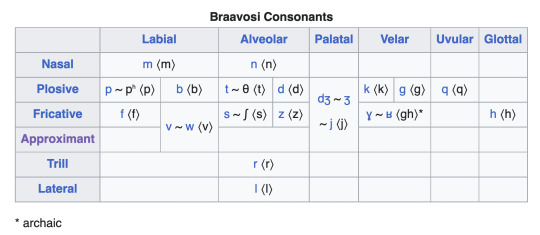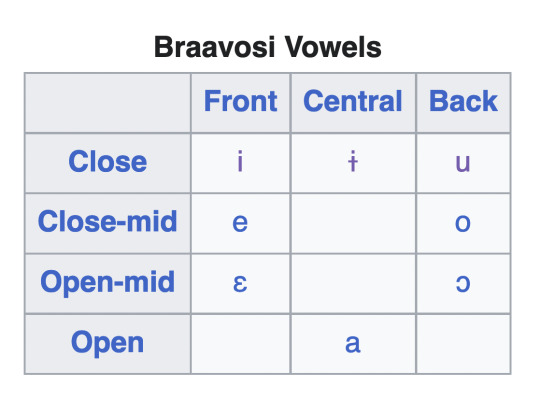#yeah ik ik bicameral scripts get some flak but i think it works
Explore tagged Tumblr posts
Text
The Titan’s Tongue: The Language and Script of Braavos
Been thinking a lot about Braavos and the writing system of its tongue. Arya and Sam’s chapters exploring the city are so full of flavor and life that I wanted to gain a glimpse into its writing as well, and see what it would be like. We unfortunately have very little information about the Braavosi language, with it being completely absent from the show and only mentioned in passing in the books that the Waif is teaching it to Arya as part of her training in the House of Black and White. What little we know is largely names, but from this we can ascertain a bit about the language, and what we need for the script itself. The language seems to be to High Valyrian what Italian was to Latin: reduced vowel system (no distinction between short and long vowels, similar to Astapori Vayrian), eschewal of consonant clusters in favor of gemination (like in Tagganaro and Bellegere), and preference to end words in vowels.
Over the course of this post I will be trying to determine the sounds we would find in Braavosi and create an alphabet for the city’s people
Phonology
I imagine that the Braavosi have had a script loosely descendant from the High Valyrian writing systems, developed about 400 years ago when the first escaped slaves landed in the shrouded lagoon that is now the city’s harbor. These slaves and Moonsingers would have likely spoken a Low Valyrian tongue absent of some of the sounds that are represented in High Valyrian. By loose descent, I mean essentially that the letters are not necessarily one-to-one drawn from specific Valyrian glyphs (like Phoenician and Egyptian) but instead used as general inspiration. I also imagine that the Braavosi script is rather rounded and elegant, primarily written by quill and inkbrush, unlike Valyrian. Using @dedalvs ‘s wonderfully crafted High Valyrian and its phonology, as well as the phonologies of its descendant tongues in Astapor and Meereen, we can construct the following statements about Proto-Braavosi Low Valyrian:
no [r̥] (merged with r)
no [ʎ] (pronounced instead as [lij] or simply as [l] based on word context)
no [ɲ] (pronounced instead as [nij] or simply as [l] based on word context)
no long vowels (merged with short vowels)
the “gh” sound ([ɣ ~ ʁ]) is present in Proto-Braavosi, but does not seem to persist into modern Braavosi as we will see
Based on the attested spellings of the Braavosi names (factoring the fact that it is filtered through a Westerosi’s ears), we can extract the following information.
Consonants: l qu f g n t r y/j s d b sh th c/k/ch q m z ph h
Vowels: a e i o u y
Diphthongs: aa (Braavos), ae (Baelish), ay (Prestayn), ey (Jeyne, Wendeyne)
Since ph and f seem to be transcribed as distinct (such as in the name Phario Forel) they seem to be phonologically distinct sounds and not simply allophones. Thus, ph can either be an aspirated stop [pʰ] or a bilabial fricative [ɸ]. Since no unvoiced ‘p’ is represented, let us say that this is an allophonic variant of \p\ in Braavosi speech, transcribed by foreigners as “ph.” The “ch” in Tycho Nestoris could be an affricate [t͡ʃ] or a [k]; the latter seemed more natural to me. The “qu” in Allaquo seemed it could simply be represented as [k] + [w] or [q] + [w], or otherwise a labialized [kʷ] or [qʷ]; I think it can be ignored when creating our letters, particularly as it is not attested in High Valyrian. The sound sh ([ʃ]) exists only in the name Baelish, which very well may be Westeros-ized by its speakers, seeing especially as the sound does not exist in High Valyrian; we will thus treat it as an allophone of [s]. Finally, “th” is used to spell many Braavosi names (Uthero, Otherys, Lotho); this may be interpreted as a fricative [θ] or simply as another spelling of [t]; for the sake of simplicity, we will represent this allophone (if it is even an allophone at all) as another variant of “t.” Thus our final consonant inventory is as follows:
Consonants: p/ph b t/th d k/c/ch g q gh* s/sh f v/w z m n l y/j r h
*gh = Proto-Braavosi only
Or, represented in an IPA chart:

Apart from the loss of distinction in vowel length, there are two changes of note. One is that the rounded close front vowel [y] in Valyrian has shifted to an unrounded close central vowel [ɨ] in Braavosi. Furthermore, although not represented in writing, the vowels ɛ and ɔ are found in Braavosi speech (basically leaning hard on the medieval Florence/Italian parallels).
We are left with the following vowels.

(For context, here is modern Italian phonology lol.)

As for diphthongs, I won’t elaborate too much except to say that they are simply written using a combination of vowels (and the semivowel j/y), though their spelling patterns don’t always match onto their pronunciations. This post dwells little on orthography, but I think with more than 400 years of history the Braavosi script will have had time to develop concrete spelling patterns and crystallized standards which no longer reflect modern speech (though due to the somewhat egalitarian economy and political systems of Braavos, at least compared to Westeros and the other Free Cities, I think the script will not have diverged too radically from “common sense���). For instance due to sound changes representing an older form of Braavosi, a name like “Baelish” would likely be spelled something like “Bayelis,” with the spelled cluster “aye” represent the name.
I think there are two sound changes at play: one from High to Low Valyrian led to the loss of diphthongs (ae => e, so Daenerys => Denerys), and the second one from Low Valyrian to Braavosi which led to the elision of “y” between vowels(aye => ae, so Bayelis => Baelis/Baelish).
Script
With the phonology and basic history of Braavosi speech outlined, we can present the final writing system of the language, which I show in my next post:
https://www.tumblr.com/greenbloods/722222867516915712/the-idea-of-a-braavosi-alphabet-has-been-churning?source=share
Though it is bog-standard for fantasy scripts, I decided to make the writing system a bicameral alphabet, as it would best showcase the aesthetics of the script. I also wanted there to be a feel as if there were some far-back connection between Braavosi and the alphabet of the Common Tongue of Westeros (they would simply be using the Latin alphabet), which is also why I decided to make the “o” letter a blatant imitation of our letter O. The letter f is derived from the letter p as a visual reminder of the “newness” of the letter
Keep in mind that the script is only a snapshot of written conventions in one medium during one period of time, and there may be many variants for the script as well.
#yeah ik ik bicameral scripts get some flak but i think it works#braavos#valyrian#high valyrian#asoiaf#game of thrones#neography#david j peterson#linguistics#my posts
22 notes
·
View notes